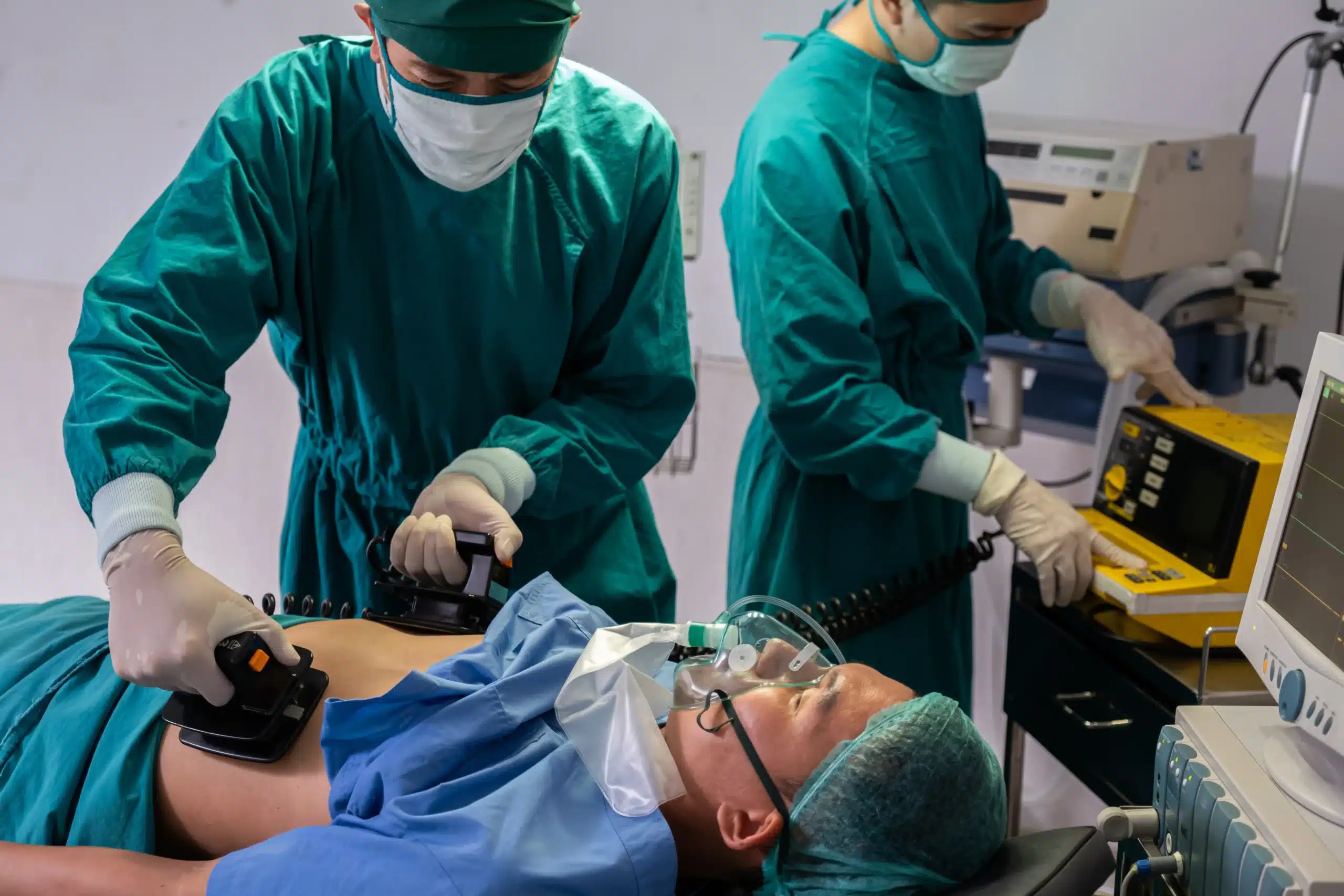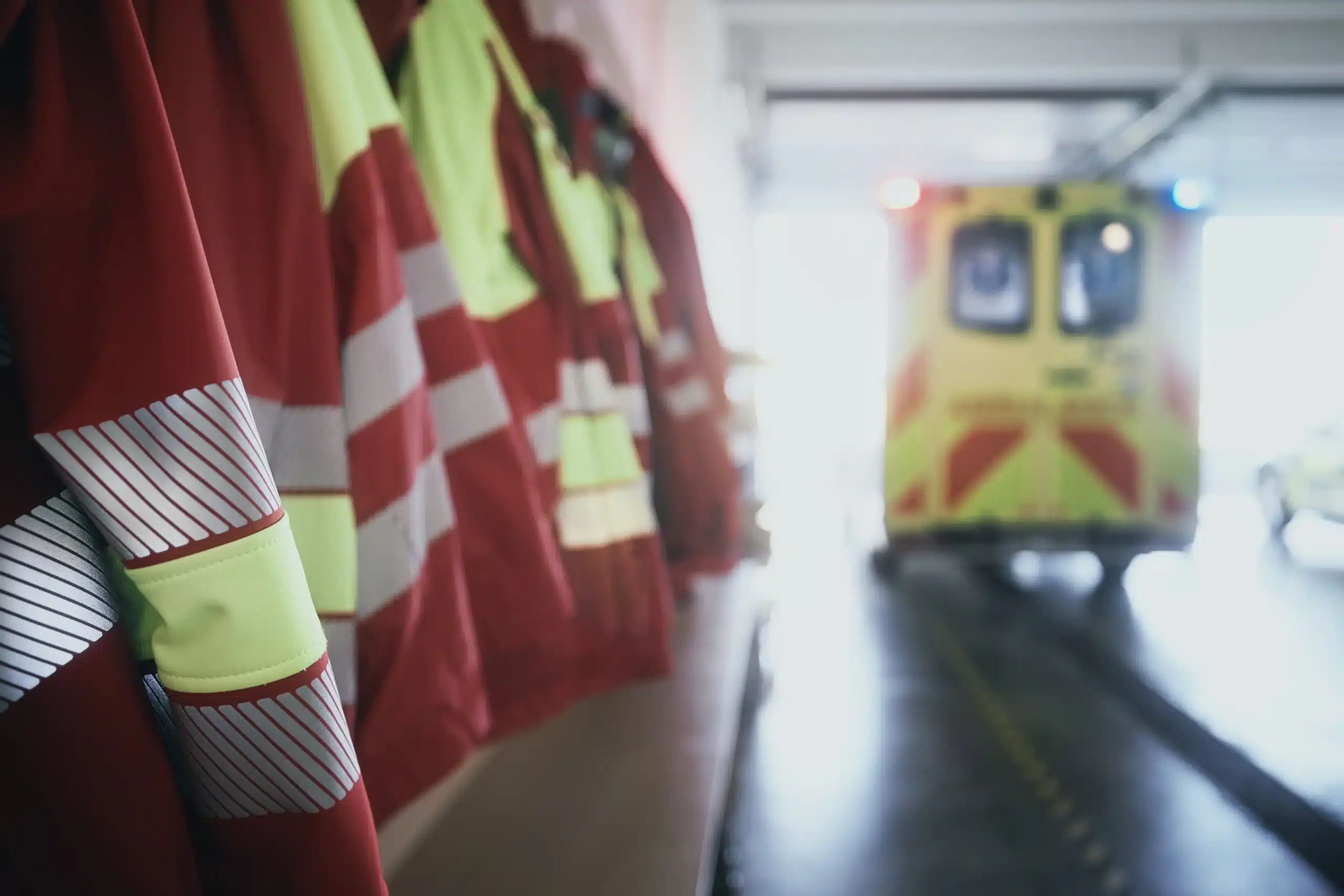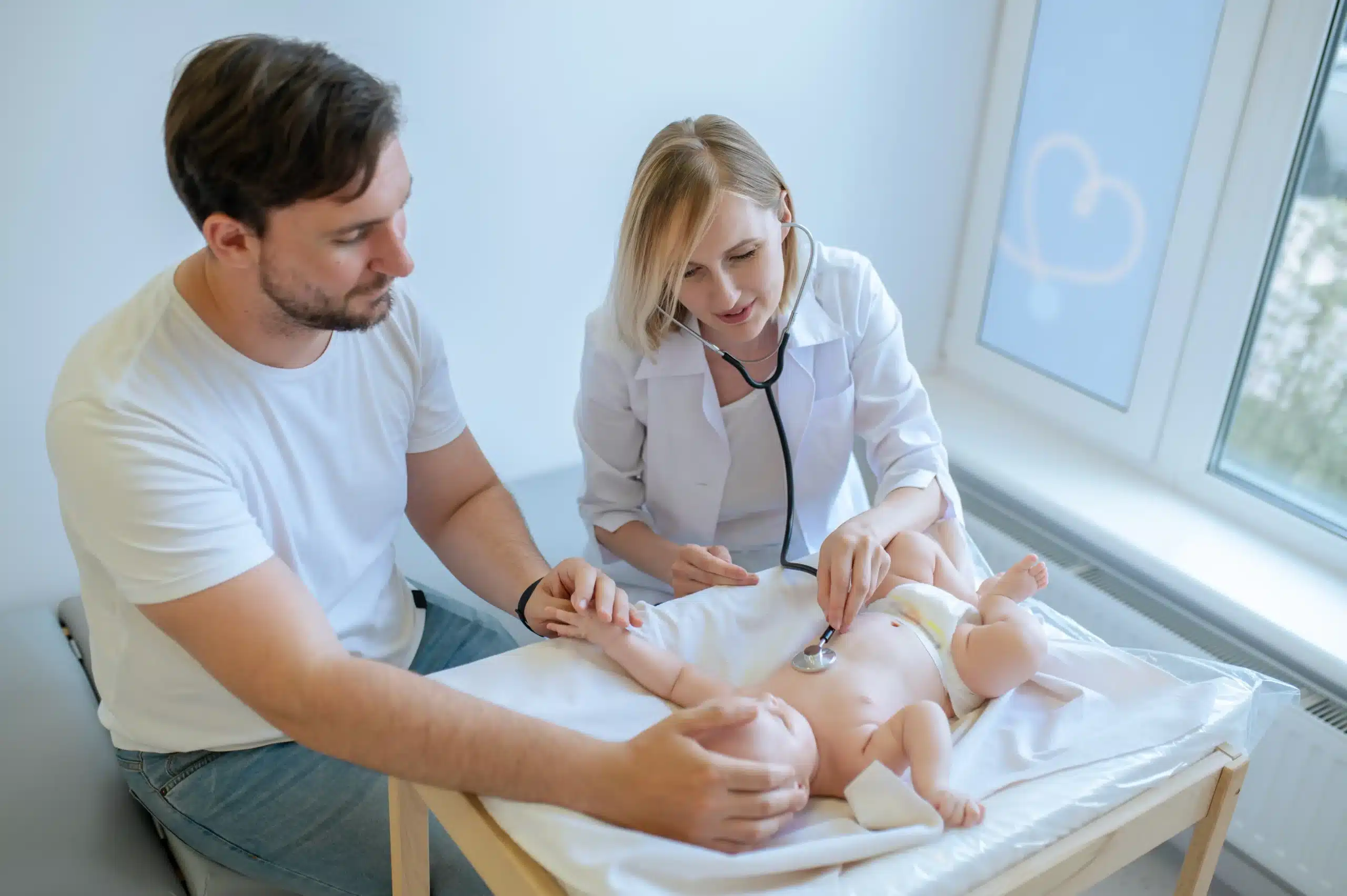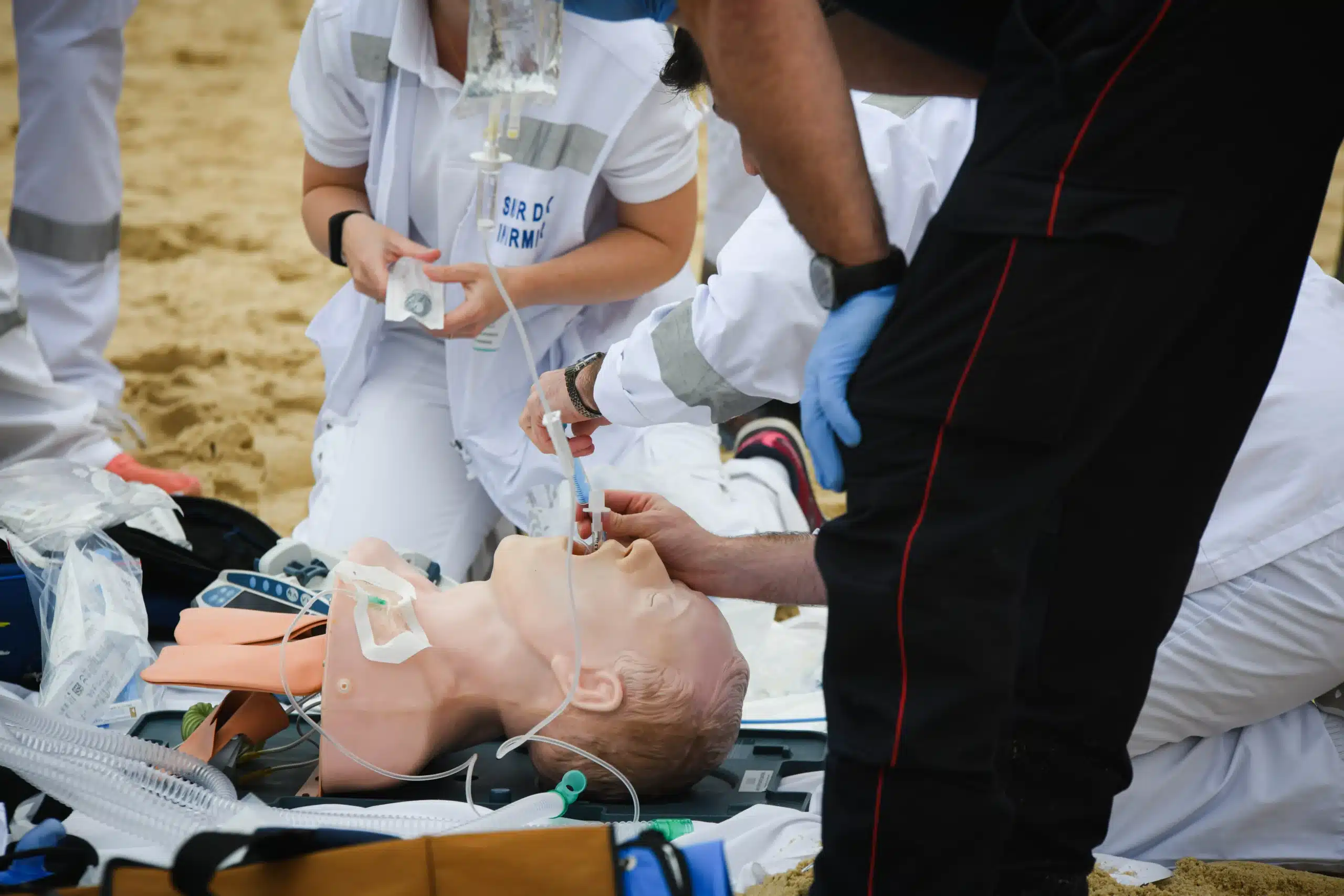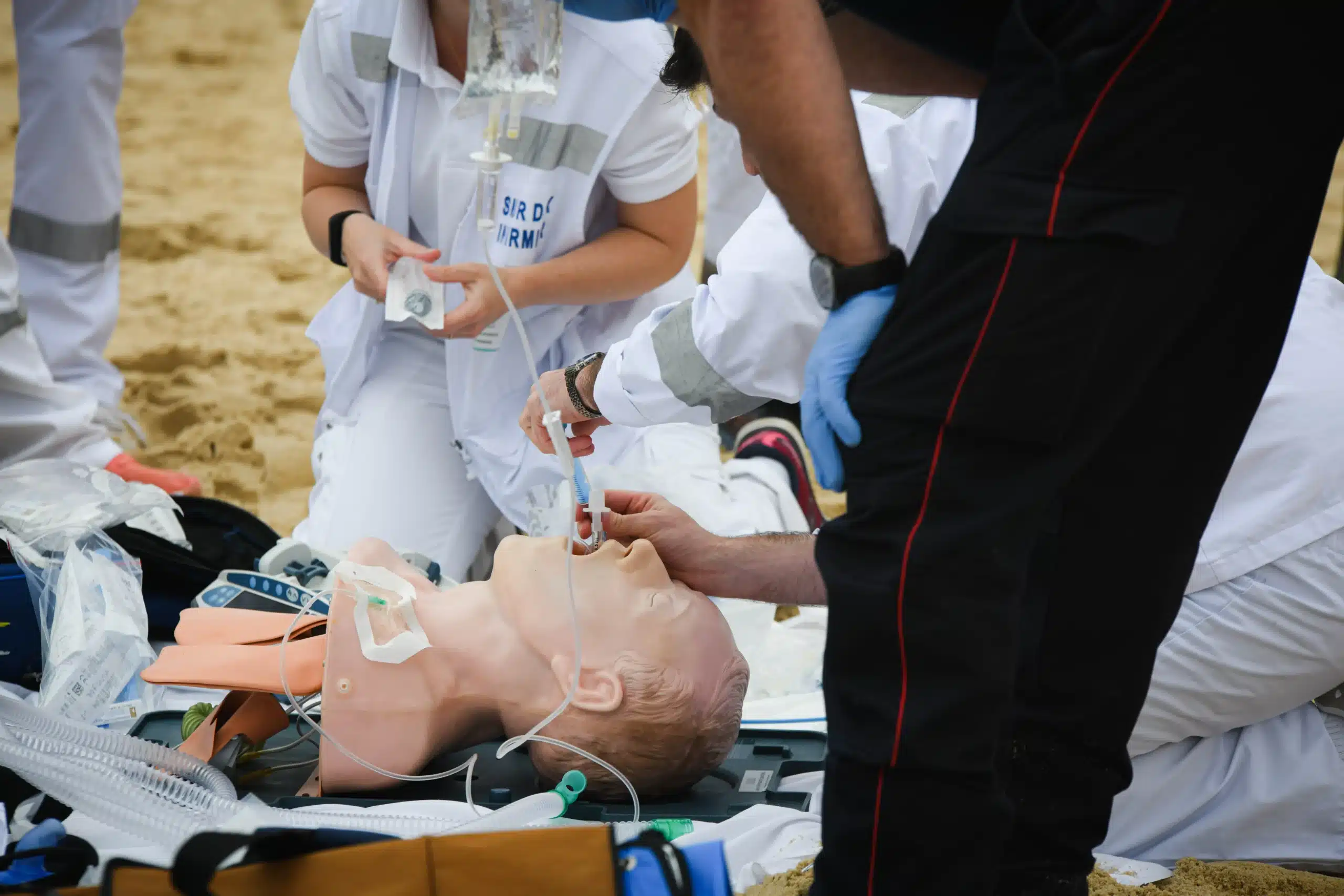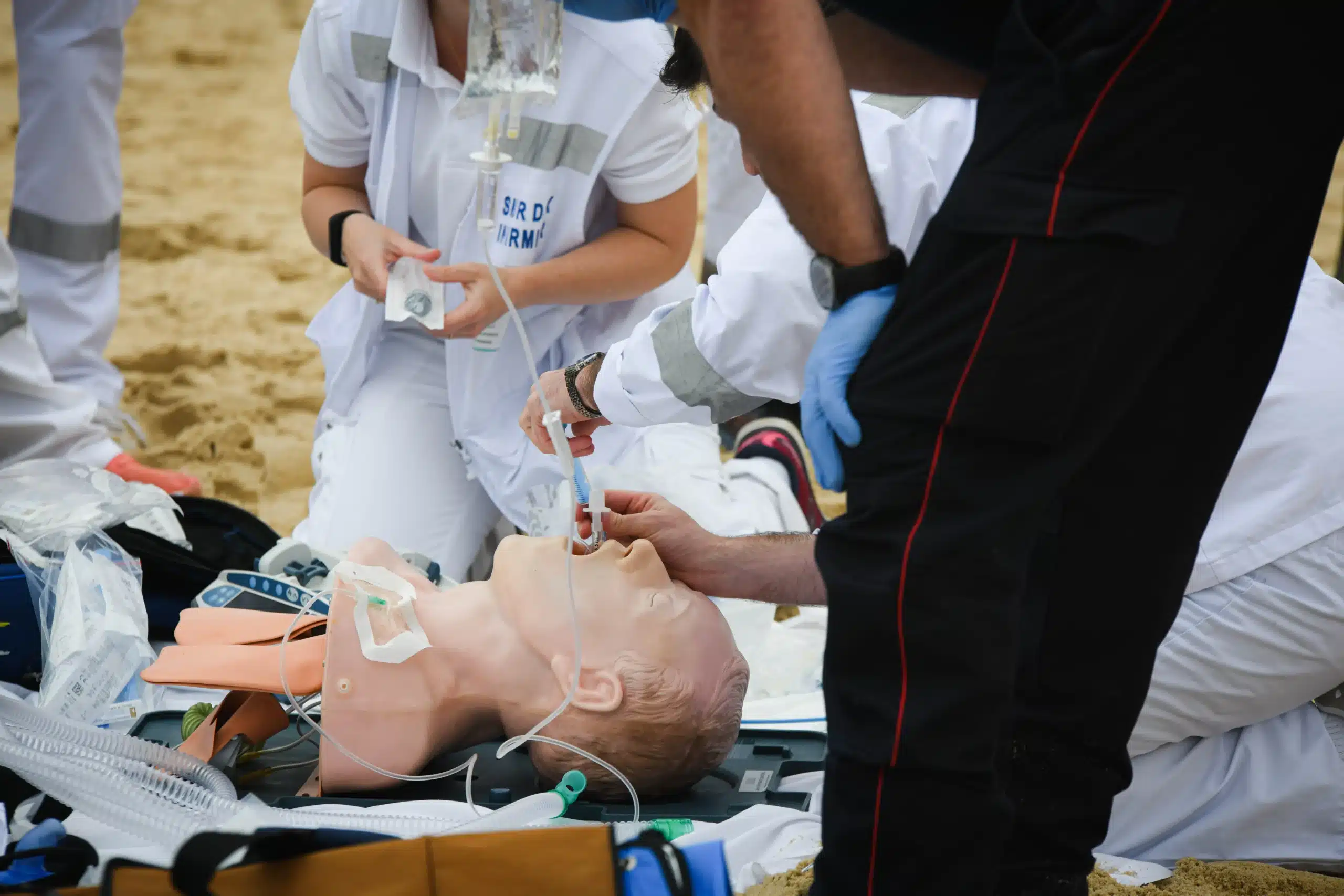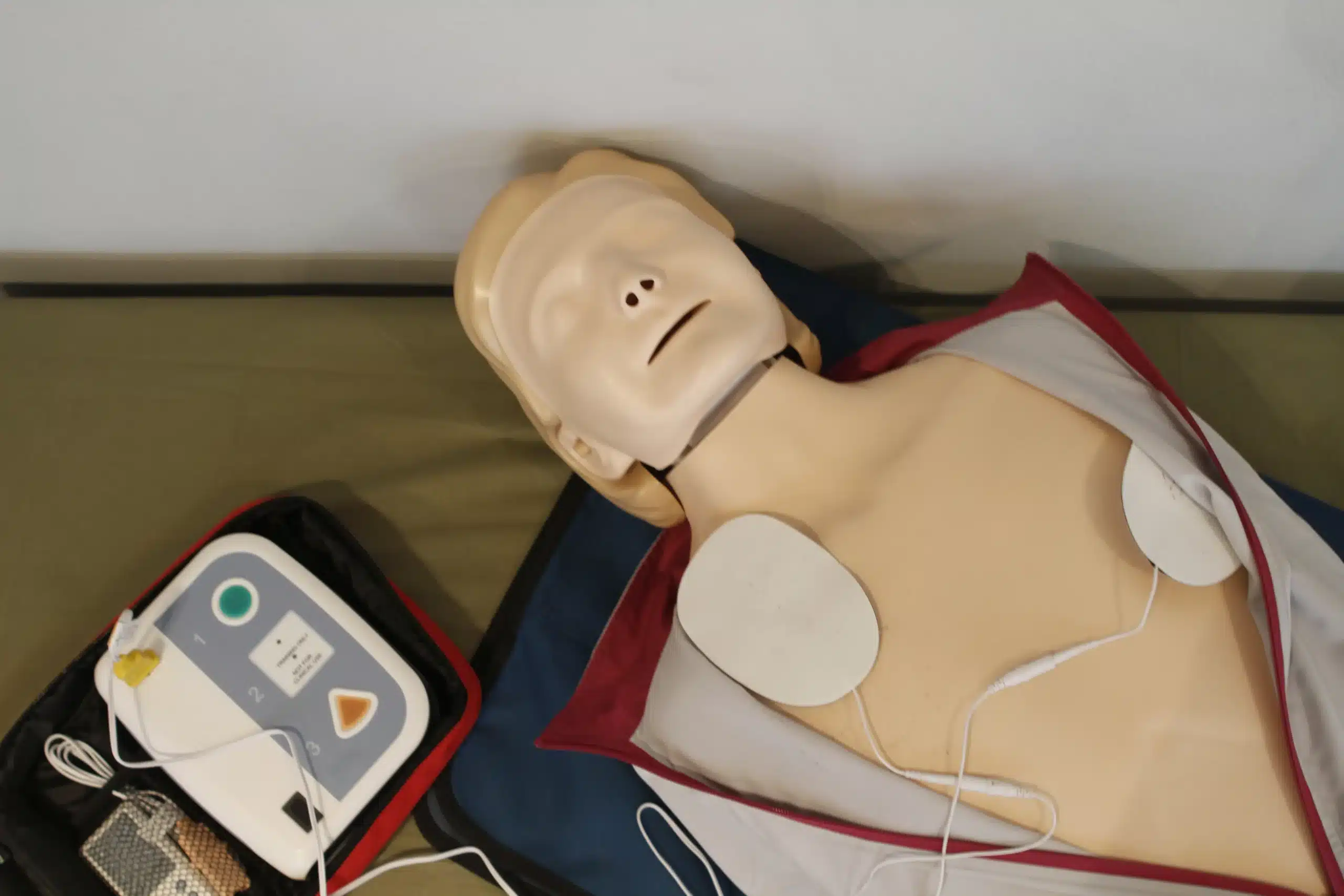Emergencies can happen anytime, anywhere, and knowing how to respond effectively can be life-saving. CPR certification provides the knowledge and skills to act quickly and confidently in critical situations. This guide will walk you through the process of becoming CPR certified, from understanding the different types of courses to finding CPR certification nearby. We’ll cover the essential skills you’ll learn, the certification process, and how to choose the right CPR provider. Whether you’re required to have CPR certification for your job or simply want to be prepared for anything, this guide will provide you with the information you need to get started. We’ll also discuss the importance of maintaining your certification and staying current with the latest guidelines.
Key Takeaways
- CPR certification empowers you to act in emergencies: Learn essential life-saving skills and gain the confidence to respond effectively in critical situations. Explore various CPR and First Aid courses to find the right fit for your needs.
- Select a reputable CPR provider: Choose an accredited provider with qualified instructors, comprehensive materials, and flexible scheduling options. Consider your learning style and preferences when making your decision.
- Stay current with CPR guidelines: Renew your certification regularly and participate in refresher courses to maintain your skills and knowledge. Consistent practice ensures you’re prepared to provide effective assistance when needed.
What is CPR Certification?
CPR certification means you’ve successfully completed a CPR course and are equipped to perform CPR. It’s a vital credential for healthcare professionals and anyone who wants to handle emergencies effectively. While CPR certification isn’t legally required to perform CPR in most situations, formal training ensures you can use this life-saving technique correctly and confidently.
Definition and Importance
Earning your CPR certification demonstrates a commitment to safety and preparedness. It shows you’ve taken the time to learn the proper techniques and are ready to respond effectively in a crisis. This is especially important for healthcare providers, but the value extends to teachers, parents, workplace responders, and anyone who might encounter a medical emergency. CPR certification can be the difference between life and death. For businesses, having certified employees can create a safer work environment and potentially reduce liability. For individuals, it provides peace of mind knowing you can help in a critical situation.
Key Skills You’ll Learn
CPR combines chest compressions and rescue breaths to maintain blood circulation and oxygen flow in someone who has stopped breathing or has no pulse. CPR training is accessible to almost everyone and doesn’t demand extensive medical background. In a CPR class, you’ll learn to assess an emergency, perform chest compressions, give rescue breaths, and follow the correct sequence of steps. You’ll also learn to recognize the signs of a heart attack, stroke, and choking, and how to respond appropriately. Many CPR courses, like those offered by Pleasanton CPR Classes, also include AED training. These skills empower you to provide immediate assistance until professional help arrives. At Pleasanton CPR Classes, we offer a low price guarantee and group discounts to make these essential skills accessible to everyone in the Pleasanton, Dublin, and San Ramon communities.
Types of CPR Classes
Knowing which CPR class is right for you depends on your specific needs. Here’s a breakdown of common CPR class types:
Adult CPR
Adult CPR equips you with the skills to respond to cardiac arrest and breathing emergencies in adults. You’ll learn how to recognize the signs of a cardiac event, perform chest compressions, give rescue breaths, and use an automated external defibrillator (AED) if available. These skills are invaluable in various settings, from homes and workplaces to public spaces. If you’re a medical student, healthcare professional, or simply someone who wants to be prepared, an adult CPR course is a great place to start. CPR and First Aid certification courses are available daily.
Child and Infant CPR
Child and infant CPR courses focus on the unique needs of younger individuals. Because children and infants have smaller airways and different physiological responses than adults, specialized techniques are necessary. These classes teach you how to perform CPR on infants and children, covering rescue breaths, chest compressions, and how to respond to choking incidents. This training is essential for parents, caregivers, teachers, and anyone who regularly interacts with children. For those looking for comprehensive training, consider a combined CPR and First Aid course.
Basic Life Support (BLS)
Basic Life Support (BLS) certification is typically required for healthcare providers, first responders, and other professionals in the medical field. BLS builds upon the fundamentals of CPR, adding advanced skills like using a bag-valve mask (BVM) for ventilation and working as part of a team during a resuscitation attempt. BLS certification also covers how to relieve choking in adults, children, and infants. Pleasanton CPR Classes offers comprehensive BLS courses that meet the American Heart Association guidelines. We also offer group discounts, so check our group discount page for more information.
First Aid/CPR Combo
A combined First Aid/CPR class offers comprehensive training that prepares you for a wider range of emergencies. In addition to CPR techniques, you’ll learn essential first aid skills, such as how to treat minor injuries like cuts and burns, manage sprains and fractures, and respond to medical emergencies like allergic reactions and seizures. This combined approach provides a well-rounded skill set, empowering you to handle various situations confidently and effectively. Check out our CPR and First Aid combo courses to learn more. If you’re concerned about cost, we offer a low price guarantee. Visit our low price guarantee page for details.
Find CPR Classes Near You
Finding the right CPR class shouldn’t feel overwhelming. Whether you’re looking for a basic CPR and first aid course or advanced life support training, there are several convenient ways to find CPR certification near you.
Local Training Centers
Dedicated training centers like Pleasanton CPR Classes offer a focused learning environment with certified instructors. These centers often provide various levels of certification—from basic CPR and first aid to advanced life support—so you can find the right fit for your needs. Plus, they often have flexible schedules to accommodate busy lifestyles. Pleasanton CPR Classes offers a low price guarantee and serves Pleasanton, Dublin, and San Ramon. They also offer discounts for group classes.
Community Organizations
Many community organizations offer CPR classes, often at a lower cost than private training centers. Check with your local community centers, schools, and recreation departments for upcoming courses. Organizations like the Red Cross frequently hold training sessions in various locations. You can easily find local Red Cross CPR and first aid certification classes through their website.
Workplace Programs
Some employers offer CPR training as part of their employee development programs, especially in healthcare settings. Basic Life Support (BLS) training is often a requirement for healthcare providers, and many hospitals and clinics provide on-site training and certification. Inquire with your HR department to see if your workplace offers CPR training opportunities. You can also find information on RQI classes through Pleasanton CPR classes.
Online Provider Locators
If you’re having trouble finding local classes or prefer the flexibility of online learning, use an online provider locator. Websites like the American Heart Association and the Red Cross have search tools to help you find certified instructors and training centers in your area. And don’t worry about the effectiveness of online learning—studies show that students learn CPR equally well online or in person. Just make sure the program you choose includes a hands-on skills assessment component to complete your certification.
What Happens in a CPR Class?
Curious about what goes on in a CPR class? It’s a blend of information, hands-on practice, and skill assessment. Here’s what you can expect:
Course Content
CPR classes cover essential life-saving skills and knowledge. You’ll learn to recognize the signs of a cardiac arrest, when to call 911, and how to deliver effective chest compressions and rescue breaths. Many courses, like those offered at Pleasanton CPR Classes, also include AED training. The curriculum typically follows guidelines from organizations like the American Heart Association, ensuring consistent, high-quality instruction. For more information about our AHA-aligned BLS course, check out this page. We also offer CPR and First Aid certification courses that combine these two crucial skill sets.
Hands-on Practice
Hands-on practice is key to effective CPR training. You’ll practice your skills on mannequins to develop the muscle memory and confidence needed to perform CPR in an emergency. Instructors provide guidance and feedback to ensure you’re using the correct techniques. This practical experience is invaluable for responding effectively under pressure. Pleasanton CPR Classes emphasizes hands-on learning in all our courses, including our RQI classes.
Certification Process
After completing the course and demonstrating proficiency, you’ll receive a certification card, typically valid for two years. Some certifications, like BLS, may involve a written exam in addition to the practical skills test. Our instructors will prepare you for both. Pleasanton CPR Classes offers a low price guarantee for high-quality, affordable training. We also offer group discounts for businesses and organizations.
CPR Certification: Cost & Value
Getting CPR certified is an investment in life-saving skills. But how much does it cost, and what factors influence the price? Let’s break down the costs associated with CPR certification and explore how to find the best value.
Average Pricing
Generally, you can expect to pay between $50 and $100 for CPR certification. This price typically covers course materials, instruction, and the official certification card you receive upon completion. Remember, this is an investment in potentially life-saving knowledge.
Factors Affecting Cost
Several factors can influence the final cost of your CPR certification. The type of course you take, such as basic CPR and First Aid or more advanced training like BLS, will play a role. Location and instructor experience can also affect pricing. Some providers may offer additional resources, impacting the overall cost. When choosing a provider, compare course content, schedules, costs, and reviews. Experienced instructors bring a depth of knowledge that goes beyond the basics, providing valuable insights.
Group Discounts & Promotions
If you’re looking to save on CPR training, explore group discounts. Many providers, including Pleasanton CPR Classes, offer reduced rates for groups, making it a cost-effective option for workplaces or community organizations. Look for promotions or special offers. Pleasanton CPR Classes offers a low price guarantee, ensuring high-quality training at a competitive price. They also provide American Heart Association BLS courses with competitive pricing.
CPR Class Duration & Scheduling
Time Commitment
So, you’re ready to get CPR certified—fantastic! One of your first questions is probably, “How long does a CPR class actually take?” It’s a valid question, and the answer is generally straightforward. Most CPR courses range from about two to four hours. The exact time commitment depends on a few factors, including the type of CPR class (adult, child/infant, or BLS), and whether you choose an in-person, blended, or online course. The curriculum of the training provider also plays a role. Pleasanton CPR Classes offers a variety of courses to fit your specific needs, and we can help you choose the right one.
Flexible Learning Options
Finding a CPR class that works with your busy schedule is easier than ever, thanks to the flexible learning options available. The American Red Cross, for instance, offers three main formats: in-person, online, and blended learning. Traditional in-person classes provide a structured environment with hands-on practice and direct interaction with an instructor. If you thrive in a classroom setting and prefer guided instruction, this might be the best fit. For those who prefer to learn at their own pace, online CPR certification offers a convenient alternative. You’ll work through the material independently and complete an online assessment. Blended learning combines the best of both worlds, offering the flexibility of online learning with an in-person skills session. This format is great if you need to work around a busy schedule but still want hands-on training with a certified instructor. Pleasanton CPR Classes offers a variety of scheduling options, including weekend and evening classes. Contact us to find a class that works for you.
Choose the Right CPR Provider
Finding the right CPR class is about more than just checking a box. It’s about gaining the confidence and skills to potentially save a life. Here’s what to look for when choosing a CPR provider:
Accreditation and Reputation
First things first, confirm your chosen provider is accredited by a recognized organization. Look for names like the American Heart Association (AHA), the American Red Cross, or the National Safety Council (NSC). These organizations set high standards for CPR training, ensuring you receive quality instruction. Beyond accreditation, do some digging into the provider’s reputation. Online reviews offer insights from past students, giving you a feel for the overall learning experience. For example, Pleasanton CPR Classes, offered by Safety Training Seminars, is a woman-owned AHA Training Center known for providing comprehensive CPR courses.
Instructor Qualifications
Experienced, certified instructors are essential for effective CPR training. Instructors should not only possess up-to-date certifications but also demonstrate a passion for teaching and a knack for clear communication. A great instructor can make all the difference in your comfort level and skill retention. Look for providers who highlight their instructors’ experience and qualifications. If you have any questions, don’t hesitate to reach out to the provider directly and ask about their instructors’ backgrounds. Pleasanton CPR Classes emphasizes excellent customer service and has a low price guarantee.
Course Materials and Resources
CPR courses vary in their content, format, and included resources. Compare what each course offers before making a decision. Think about your learning style and schedule. Do you prefer in-person, hands-on learning, or would a blended learning approach with online modules work better for you? Also, consider the materials provided. Does the course include access to practice materials, online resources, or refresher courses? A comprehensive CPR course should equip you with everything you need to feel prepared for a real-life emergency. Many courses also include First Aid training alongside CPR instruction, which can be a valuable addition to your skillset. Check with your chosen provider to see what’s included in their course offerings. Pleasanton CPR Classes offers a variety of courses, including BLS, CPR and First Aid, and RQI classes. They also offer discounts for group classes.
Maintain Your CPR Certification
Earning your CPR certification is a significant achievement, but staying current with the latest guidelines and techniques is equally important. This section covers what you need to know about maintaining your CPR skills.
Validity Period
CPR certifications are typically valid for one to two years. This means you’ll need to renew your certification regularly to maintain your qualifications. Check your certification card or digital certificate for the exact expiration date. Knowing this date helps you plan and avoid any lapses in your certification. At Pleasanton CPR Classes, we send reminders as your renewal date approaches, making it easy to stay current.
Renewal Process
Renewing your CPR certification usually involves a refresher course or a full certification course, depending on your certifying organization’s requirements. Many providers, including Pleasanton CPR Classes, offer convenient options like online courses or blended learning. Check with your certifying organization or training provider for specific renewal procedures and any associated fees. We strive to make the renewal process straightforward, offering various class schedules and formats.
Continuing Education
Even if your certification hasn’t expired, continuing education is highly recommended. Regularly participating in refresher courses or workshops helps you stay sharp and confident in your abilities. It also ensures you’re familiar with any updates to CPR guidelines or protocols. Pleasanton CPR Classes offers continuing education opportunities to help you stay at the top of your game. We believe ongoing training is key to providing effective care in emergencies.
Top CPR Certification Providers
Finding the right CPR certification provider is crucial for receiving high-quality training and a recognized credential. Several respected organizations offer CPR certification courses, each with its own strengths and focus. Let’s explore some of the leading providers:
American Heart Association (AHA)
The AHA offers a range of certifications esteemed globally. Known for its rigorous, evidence-based approach, the AHA provides various courses, including BLS, ACLS, and PALS certifications. These certifications are highly regarded, especially in healthcare. If you’re looking for training aligned with the latest scientific guidelines, the AHA is an excellent choice.
American Red Cross
The American Red Cross is a well-known and respected provider of CPR and first aid training. They offer various courses, including CPR/AED, First Aid, and specialized courses like Lifeguarding. With a focus on community preparedness, the Red Cross makes CPR training accessible. Their blended learning options, combining online study with in-person skills sessions, offer flexibility.
National Safety Council (NSC)
The NSC partners with training centers across the country to deliver CPR and safety training. Accredited providers develop courses based on recognized guidelines, such as those from the AHA or the American Red Cross. This ensures a consistent standard of training. Visit the NSC website to find authorized training centers near you.
American Safety & Health Institute (ASHI)
ASHI offers a range of CPR and first aid training courses accepted by many employers. Their programs cover various needs, from basic CPR for the community to advanced training for healthcare professionals. ASHI’s focus on practical skills helps participants gain confidence in responding to emergencies.
ProTrainings
ProTrainings provides online CPR and first aid training that meets OSHA and other regulatory requirements. This online format offers flexibility for self-paced learning. Their courses cover essential CPR techniques and provide certification upon completion.
National CPR Foundation
The National CPR Foundation offers various CPR certification courses for both laypersons and healthcare professionals. They provide flexible learning options, including online and in-person classes. Their focus on comprehensive training helps participants gain the knowledge and skills to respond confidently in emergencies.
American CPR Care Association
The American CPR Care Association provides accessible and affordable CPR and first aid training. They offer a range of courses suitable for individuals, families, and workplaces. Their commitment to affordability makes CPR training more accessible.
Pleasanton CPR Classes
Pleasanton CPR Classes, offered by Safety Training Seminars, provides comprehensive CPR, BLS, ACLS, PALS, and first-aid courses in Pleasanton, CA, and surrounding areas. They offer a low-price guarantee and convenient daily classes. With a commitment to excellent customer service, Pleasanton CPR Classes ensures a positive learning experience. Explore their CPR and first-aid certification courses to find the right fit. They offer various certification levels, from basic to advanced life support, to meet diverse needs.
Common CPR Certification Myths
Clearing up some common misconceptions about CPR certification can help you find the right training program. Let’s address a few myths:
Online vs. In-Person Training
One common myth is that online CPR certification is just as effective as in-person training. While online courses offer convenience and lower costs, they often lack a crucial element: hands-on practice. Effective CPR requires physical skill and muscle memory, which you develop by practicing compressions and rescue breaths on mannequins. In-person training provides real-time feedback from instructors, ensuring you learn the correct technique. Plus, some employers or licensing boards may not accept fully online CPR certifications, so it’s essential to confirm their requirements. A blended learning approach—combining online coursework with in-person skills practice—often provides the most comprehensive training.
Certification Validity
Another misconception is that everyone needs to be CPR certified. While it’s not legally required for all individuals, proper training can significantly impact your ability to respond effectively during an emergency. Learning CPR empowers you to act confidently and potentially save a life. Even if your job or personal life doesn’t require certification, the skills you gain are invaluable. It’s also important to understand that certifications expire. Check the expiration date printed on your card to ensure your certification remains current.
Recertification Requirements
How often you need to recertify depends on the certifying organization and the type of CPR certification you hold. Most certifications are valid for approximately two years and require periodic renewals to stay current with the latest guidelines. Renewal usually involves a refresher course to reinforce your skills and knowledge. For instance, the American Heart Association’s BLS course includes a test to ensure you maintain proficiency. Check with your certifying organization or Pleasanton CPR Classes for specific recertification requirements.
Related Articles
- Why CPR is Critical in Healthcare and Life-saving Emergencies
- CPR Certification in San Ramon: Your Complete Guide – Pleasanton CPR Classes
- Why CPR is Important in Healthcare – Pleasanton CPR Classes
- CPR Certification in Dublin: Your Guide – Pleasanton CPR Classes
- CPR Courses in Dublin: Your Complete Guide – Pleasanton CPR Classes
Frequently Asked Questions
Q: I’m not a healthcare professional. Is CPR certification still relevant for me? Absolutely! While CPR certification is often a requirement for healthcare providers, anyone can benefit from learning these skills. Knowing CPR can empower you to respond effectively in emergencies, whether at home, in the workplace, or out in the community. It’s a valuable skill to have, regardless of your profession.
Q: How do I choose the right type of CPR class? The best type of CPR class for you depends on your specific needs and goals. If you’re looking for general knowledge and preparedness, a basic CPR and First Aid course is a great starting point. Healthcare providers and those seeking more advanced training should consider BLS certification. For those who work with children, a child and infant CPR course is essential. Think about your environment and who you might need to use these skills on.
Q: What’s the difference between online and in-person CPR training? Online CPR training offers flexibility and convenience, allowing you to learn at your own pace. However, it often lacks the hands-on practice crucial for developing proper technique and muscle memory. In-person classes provide direct interaction with instructors, real-time feedback, and the opportunity to practice on mannequins. A blended learning approach, combining online coursework with in-person skills sessions, can offer a good balance.
Q: How much does CPR certification cost, and how long does it last? The cost of CPR certification varies depending on the provider, course type, and location. Generally, you can expect to pay between $50 and $100. Certifications are typically valid for one to two years, after which you’ll need to renew. Many providers offer discounts for groups, so inquire about group rates if you’re training with colleagues or friends.
Q: How can I find CPR classes near me? Finding a CPR class is easier than you might think. Start by searching online for local training centers, community organizations, or workplace programs that offer CPR courses. The American Heart Association and the American Red Cross also have online provider locators to help you find certified instructors in your area. Pleasanton CPR Classes offers a range of courses in Pleasanton, Dublin, and San Ramon, California.
